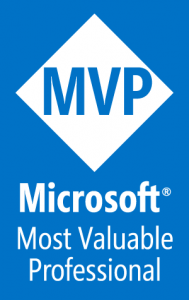Every successful business leader knows that focus is the key to achieving outstanding results. Recently at Microsoft 365 Conference 2023 in Las Vegas, I had the opportunity to present one of my favorite topics, Objectives and Key Results (OKRs), and Viva Goals. The questions and feedback keep flowing, it appears as though many of you are interested in OKRs and see the value of the profound framework for organizational goal setting.
One of our phrases around the office, promoted by Danielle Wells, Director of Marketing at Creospark, and said by many others, captures OKRs well, “Every time you say yes to something, you are saying no to something else.” This significate statement highlights the importance of narrowing the business focus on the things that truly matter. Let’s explore the benefits of focus within the OKR framework, why it is important, and first steps on how to effectively implement focus and OKRs in your organization.
Benefits of Focus
One of the primary benefits of narrowing the business focus is its ability to clearly communicate what is important. By setting and promoting specific objectives and their related measurable key results, you are providing your organization, department, and/or team with a roadmap that can then direct their efforts towards achieving strategic goals.
Moreover, narrowing focus allows you to allocate limited resources wisely. Resources such as financial, human, and time are finite, and it is crucial to direct them towards the areas that have been defined as most important, and thus will yield the greatest productivity and return on investment. By clearly defining objectives aligned with the stated focus of upstream objectives, you can align your resource allocation with your strategic priorities. This ensures that efforts are concentrated on the activities that will have the most significant impact on preferred and highlighted business outcomes.
Thankfully, more organizations are realizing that their people are their most important asset. Focusing on what matters can also help address the current broad issue of high turnover. In today’s fast-paced business environment, you too might have seen studies that show employees are reporting they want to be part of something bigger than themselves. That fits with my own anecdotal experiences talking to many of you. By tying in and making the purpose of your organization visible, you create a sense of belonging and fulfillment that can improve employee retention. When employees understand the significance of their work and how it contributes to the larger objectives, they become more engaged and motivated.
But wait, there’s more, if we start to look into ORKs’ and focus, we see that implementing the OKR framework is designed to break down silos. The OKR superpower, “Align and connect for teamwork” (Measure What Matters by John Doerr) can help cross-functional teams, such as align sales, marketing, and brand initiatives. By providing these teams with a focused direction, you enable them to allocate resources effectively and know exactly where to concentrate their efforts. This alignment ensures that all aspects of your business are working together towards a common goal, resulting in a more cohesive and impactful approach.
Focus and Defining Objectives
When we engage in OKRs to help empower focus, we then need to consider how to uncover what objectives make the most sense for our organization.
Commonly, organizations find success with setting organization objectives and key results first. This drives clarity for everyone else on how to align to these primary goals. I then find leaders often struggle to define these organizational or top level objectives.
A common playbook: Consider extracting raw objective material from your organization’s mission statement, strategic plan, key values, and leadership’s conveyed broad themes. This ensures that your objectives align with the core principles and long-term vision of your organization. The right range is between two to five objectives, with two to five key results per objective.
Focus may be relative to the organization. A small organization may only have two annual objectives with only two key results per objective as that is the reasonable limit of focus based on team members. Larger organizations may easily have five top level objectives with multiple key results per objective, as each key result may be owned by full business units or departments.
OKRs has Additional Superpowers
Implementing the OKR framework with forward-thinking stretch objectives in mind fosters innovation within your organization. There are two primary types of objectives within OKRs, committed goals (those which you expect to 100% complete) and stretch goals (in the words of John Doerr, “When you aim for the stars, you may come up short but still reach the moon”). Particularly with stretch goals, you encourage your team to think creatively and push the boundaries of what is possible. This drive for innovation can lead to competitive advantages, as breakthrough ideas and solutions have breadth to emerge.
Continually challenge your team to reach new heights. Being a part of an agreed upon and aligned purpose can help keep your team motivated and engaged, and in change, this sets your organization up to be at the forefront of its industry.
Getting Started with Focus-Driven OKRs
To effectively implement a focus-driven OKR framework, first consider setting a cadence that works for your organization. Many companies find success with a two-track approach, first, with a set of organizational / leadership defined annual OKR’s, and second, quarterly OKRs for the individuals within the organization.
The concept here is leadership sets the annual organizational or department objectives and key results, which are then cascaded down to the teams. The teams themselves then look at what are quarterly steps to get us all in the right direction. This alignment ensures that everyone is working towards the same overarching goals while allowing teams to set their specific bite sized objectives and key results.
Why I Use and Embrace OKRs
Saying yes means you are saying no to something else. Successful businesses have focus. Focus and commitment to priorities is the first superpower of OKR. Clearly define your priorities, align your team, and track progress for accountability. Embrace stretch goals that challenge your organization to achieve exceptional results, even if they seem daunting. Disrupt industries and reinvent categories by creating extraordinary OKRs that truly reflect the ambitions and potential of your organization.
Narrowing the business focus with help from OKRs brings numerous benefits, including clear communication, enhanced employee engagement, efficient resource allocation, innovation, and aligned functional and cross-functional efforts. By embracing the power of focus, your organization can achieve outstanding results, foster a sense of purpose, and drive sustainable growth. So, start focusing on the things that truly matter and unlock the full potential of your business with OKRs.






Speak Your Mind